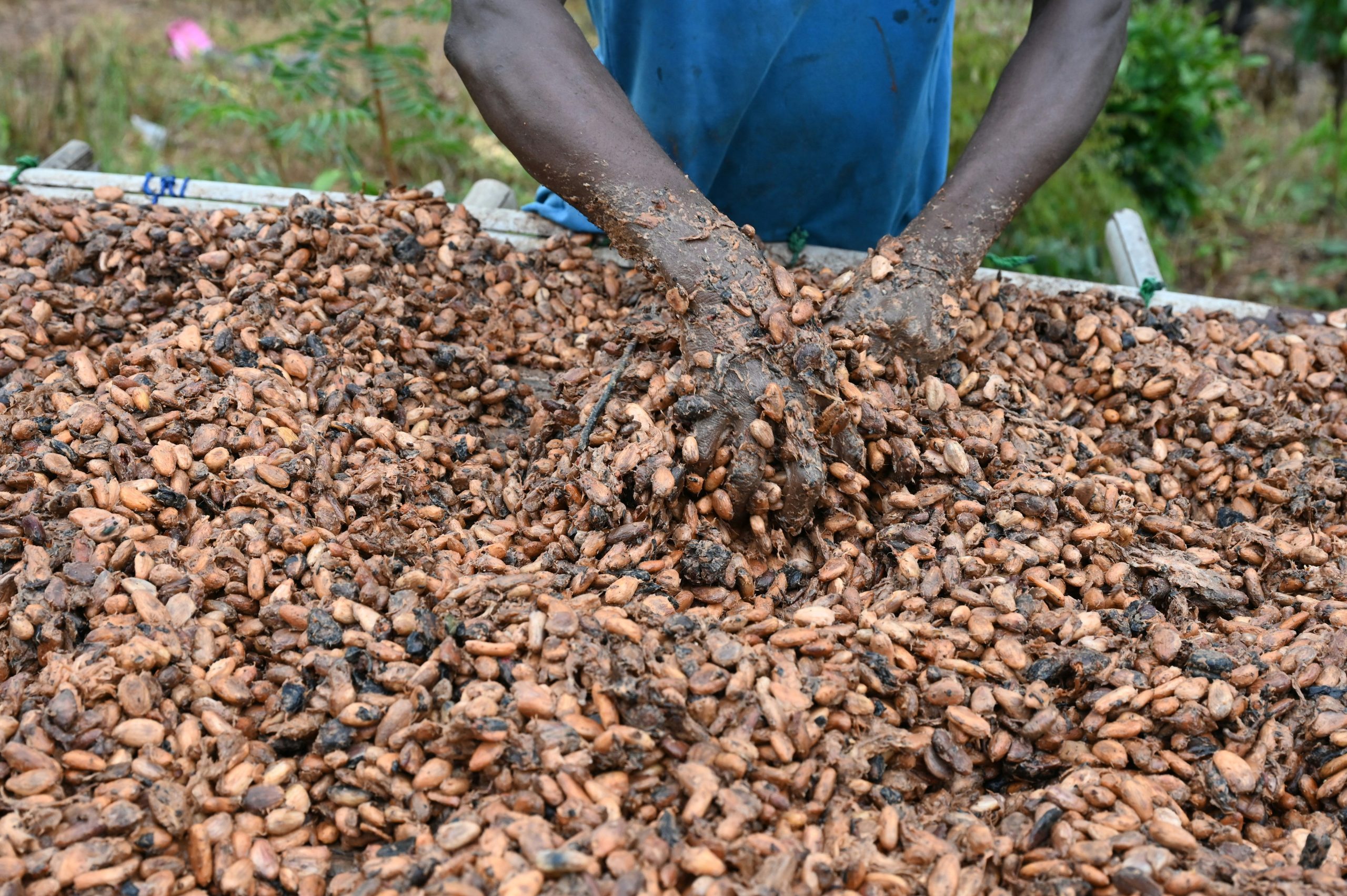(BFM Bourse) – The price of cocoa reached its highest level since 1979 on Monday, according to several American media, due to fears over production.
The prices of chocolate and chocolate ice cream are unlikely to fall in the coming months. Cocoa, the agricultural raw material essential to many chocolate products (its paste makes it possible to produce bars or candies while its powder is used for flavors in ice creams or spreads) is indeed evolving at unprecedented rates since more than 40 years.
As noted by CNBC and Bloomberg, the futures contract on a ton of cocoa in New York for expiry in December reached 3,786 dollars on Monday October 23, its highest level since 1979. This Tuesday its price fell a little, losing 0 .55% to $3,738. Beyond these last two sessions, cocoa experienced a spectacular surge, of more than 60% over one year.
Obviously, this does not mean that the prices of chocolate increase to such an extent over one year, since beyond the raw material other costs whose inflation is probably lower (transport, processing, packaging, distribution , marketing, etc.) are taken into account in the final price of the tablets. But let’s remember that, according to data from the Nielsen IQ firm cited by franceinfo, Easter chocolates saw their prices increase by an average of 10% over one year last March. Cocoa prices then reached between 2,600 and 2,800 dollars per tonne.
Moreover, CNBC was worried on Monday that the rise in cocoa prices would result in a hefty bill for Halloween, especially since sugar is also rising sharply over one year (+52%) due to drought and extreme climatic conditions (very little rain) in certain producing countries such as India or Mexico.
Cocoa trees affected by the rains
To return to the cocoa market, the rise in prices can be explained by tensions on production, while demand seems destined to increase. According to Spherical Insights, the global cocoa and chocolate market is expected to experience average annual growth of 4.37% per year between 2023 and 2030.
“Concerns persist about the insufficient supply in West Africa (a region which represents around 75% of global cocoa production, editor’s note) and forecasts announce a third consecutive global deficit for the next 2023 season. 2024″, summarized John Plassard, investment advisor at Mirabaud, at the end of September.
For the 2022-2023 season which ended in September, the International Cocoa Organization (ICO) estimated this market deficit at 100,000 tonnes.
Cocoa bean harvests were disrupted by unfavorable weather conditions. Particularly in Ivory Coast, a country which represents more than 40% of world production.
“The rainy season, particularly intense, affected cocoa plantations, causing the barely formed flowers to fall and favoring the spread of fungal diseases,” explains Le Monde in an article dated September.
As the ICO pointed out in a report published at the end of August, these heavy rains also affected Ghana (a little less than 20% of world production), causing the same problems.
Towards a “shrinkflation” of chocolate?
Cocoa remains a precarious crop that requires many optimal conditions to thrive, including consistent temperatures or protection from wind. “There is not much room for error, which makes cocoa particularly vulnerable to climate change,” David Branch, an analyst at Wells Fargo, told CNBC.
Furthermore, the El Niño meteorological phenomenon, which results in an increase in water surface temperature, and which will normally extend throughout the first half of 2024, is expected to cause heat and drought in the West African region, which risks causing a drop in production of around 10%, according to calculations by Bloomberg Intelligence.
“Given the projections of an El Nino phenomenon, the expected below-average precipitation would lead to a reduction in soil moisture. This situation raises concerns about the scale of the 2023-2024 harvest and risks cause further price increases,” the ICO noted on this point in August.
Reuters indicated in September, citing industry sources, that the harvest in Ivory Coast could fall by 20% for the 2023-2024 season (which therefore began on October 1) compared to other years, to 1.8 million tonnes, compared to 2.25 million tonnes in previous years.
Maliciously, the ICO questioned in August the consequences of increases in cocoa prices for chocolate producers.
“Chocolate makers’ profit margins are likely to be threatened by high cocoa prices, with also increases in other ingredients like sugar. Will this lead to further chocolate ‘shrinkflation’ (with smaller formats but similar prices, editor’s note), with manufacturers having to deal with high prices for cocoa beans? Or will the surge in cocoa prices be passed on to consumers and will we see more negative reactions from the share of distributors?”, explained the association.
And the ICO noted that the Belgian distributor Colruyt refused a few months ago price increases from Mondelez (Milka, Oreo) on its products. Other examples exist, such as in the Netherlands, with Jumbo which opposed Nestlé and Mars. Especially since in April, the financial director of the Hershey confectionery group cited by Bloomberg estimated that the prices of sugar and cocoa will have a stronger impact on his company’s raw material costs next year than in 2023 “But we will see how the markets evolve,” he added.
Julien Marion – ©2023 BFM Bourse
